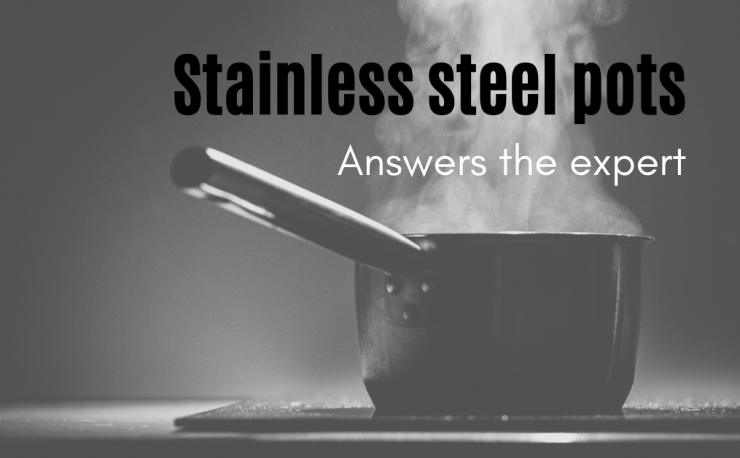
Pots and stainless steel: the problem that was presented a few days ago to our expert concerns the culinary field. Let’s find out together what is about.
The case
Our reader is a manufacturer of stainless steel pots with triple bottom.
He uses aisi 304 steel for the base structure. To this applies an aluminium case back (to spread the heat evenly) and a 430 ferromagnetic steel disk (to make them usable on induction stoves).
The problem of pots
Some customers complain that rust bites form on the inside of the pots. This since the first uses.
Some data to consider
When we know that salt is only put into water when it is boiling, we cannot attribute the problem to this element.
In addition, our reader lets us know that the metal components present in the pots are:
- Iron (Fe) – 69,47%
- Chronium (Cr) – 19,62%
- Nickel (Ni) – 8,07%
- Manganese (Mn) – 1,53%
- Molybdenum (Mo) – 0,18%
The theories of the expert
IOur expert has hypothesized two possible causes that unfortunately, in the absence of the percentage of Carbon (C) present in the alloy, cannot be confirmed.
FIRST HYPOTHESIS
We start from the assumption that the percentage of carbon in 304 stainless steel should not exceed 0.08%. If present in larger quantities, carbon tends to combine with Chronium, reducing the ability of the alloy to passivate. If chromium is not free, it cannot generate chromium oxide. This would result in less resistance to corrosion and thus the presence of rust inside the pots.
SECOND HYPOTHESIS
The aluminium case-back is applied to the pots by joining the 430 ferromagnetic steel disk to the base of the pot. This is done by brazing (or a similar process) during which high temperatures are reached. Under these conditions there is a risk of precipitation of chromium carbides, especially in the case of an alloy with a carbon content of more than 0.03%. The consequence is the risk of intercrystalline corrosion.
Other ratings on the bottom of pots
In either case, AISI 304 may not regenerate the passive layer if it is removed. This could happen to both contact with acids (present in many foods) either for mechanical removal (through ladles, forks, etc.). The phenomenon, moreover, is presented on the inner bottom of the pots, because it is the part most exposed to heat in the treated area during the brazing process.
Visit our website and find out how easy it is for businesses to buy our stainless steel products online. Bolts, nautical accessories, fittings, fastening systems for photovoltaic systems and much more.
Want to read more articles? Click here.